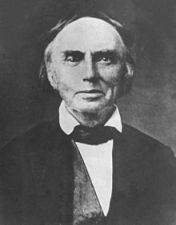This is an abridged version of a story because they were many more events than these.
As this previous post establishes, Prohibition (1917-1933) decimated the American wine industry. Gallo produced jug and fortified wines to fit the market needs, but popularizing fine wines was still decades away.
In the 1940s, Cesare Mondavi sold grapes, and later in the decade became a partner in two wineries. Interestingly, each son (Peter and Robert) got their exposure here.
In 1943, Cesare purchased the well-known Krug winery. With Peter as the winemaker, and Robert focusing on marketing, they produced two labels: CK Mondavi (for quantity) and Krug (for quality).
Cesare died in 1959, so his wife ran the company. They struggled, the brothers argued, and she chose Peter to lead a revival in 1965 – leaving Robert to be on his own.
Robert’s became enamored with fine wines on a 1962 trip to Europe, thus he was now free to pursue his dream of making fine wine in America. In his quest to find start-up money, his public relations skills helped find supportive winemakers. His first harvest came in 1966. The winery’s tasting room drew tourists, and his brand became known. By the 1970s, Mondavi was leading the wine revolution in America – but it was still a country of inexpensive, jug wines.
The story changes direction in 1975 when Stephen Spurrier (a British sommelier and wine shop owner in Paris) visits Napa Valley for the first time. The region was far from what we find today nonetheless, American wines caught Spurrier’s attention.
Upon returning to Paris, he organized a blind tasting competition featuring American and French wines a year later. Stags Leap Cabernet Sauvignon (1973) and Chateau Montelena Chardonnay (1973) won, thus beating the notable wines from Bordeaux and Burgundy. (Ever see the movie Bottle Shock?)
The world finally recognized that fine wines were in America, and the dreams of Thomas Jefferson and Nicholas Longworth came to be. Americans also took notice over time. In 2006 (30 years later) Spurrier hosted another competition, and American wines won.
Today, all 50 states have wineries. California still leads the way, but quality wines are also in Oregon and Washington – plus New York and Virginia in the east. Ironically, one of the wine regions is near Thomas Jefferson’s home.
Jug wines remain popular, and Gallo (with its 60+ labels) is one of the largest wine producers in the world – and its stable now includes quality wines. Robert Mondavi died in 2008 at age 94, but sold his winery to Constellation Brands in 2004.
According to the Wine Institute, the United States is sixth in the world in grape acreage, fourth in production, and is the largest global consumer of wine. As a wine lover, thank you Robert Mondavi for being a believer and tireless promoter of quality wine – and for leading the charge.
Enjoy this interesting, quality tribute to Robert Mondavi.
Other Posts in the Wine in America Series
The Start
Temperance and Wine
Revival: Gallo Style

